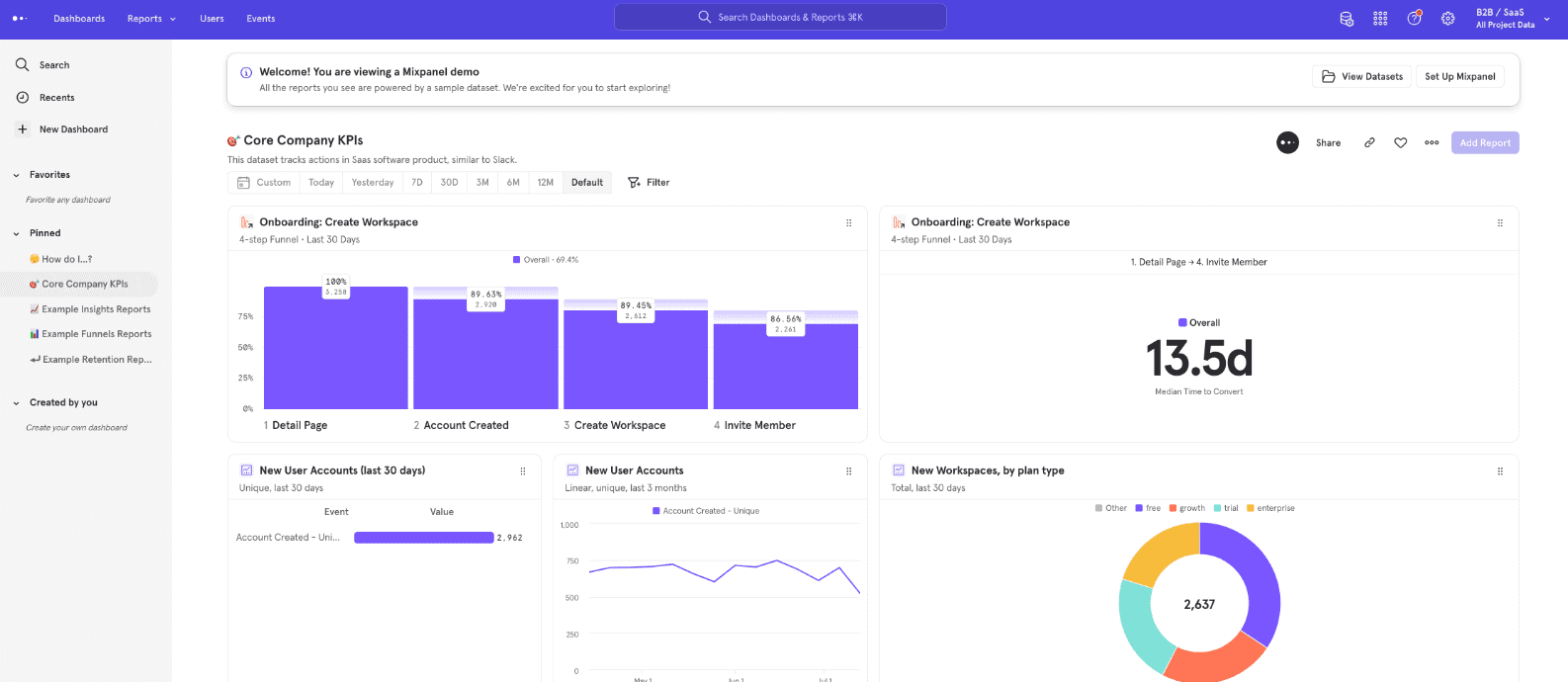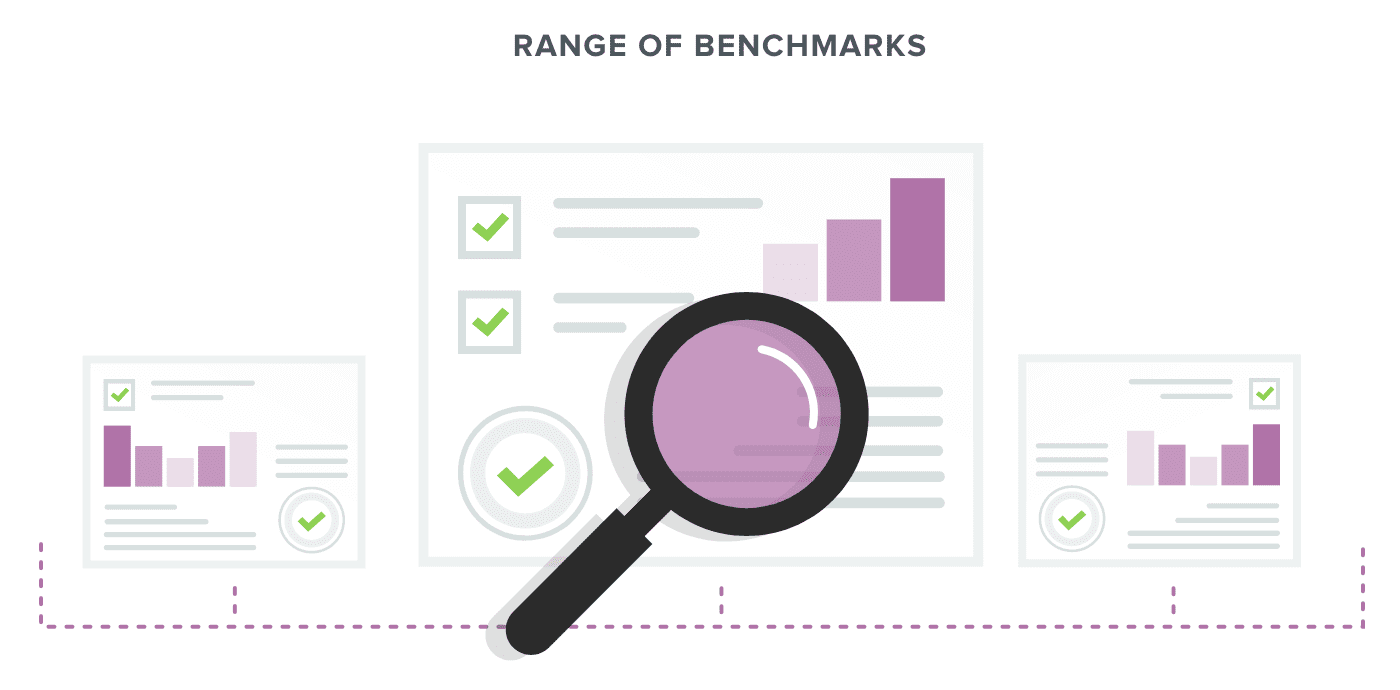
Benchmarking Site Performance Is Critical to Measuring the ROI of Your B2B Firm’s Website Redesign
Given the demands placed on a modern B2B website performance, a redesign project constitutes a disruptive and ultimately risky undertaking. Your site is the cornerstone of your brand, and it serves as the greatest touchpoint between your firm and the prospects, potential hires, and investors it needs. With so much at stake, you can’t afford to see anything less than a full return on your investment.
Before you can verify the success of any redesign, you need to establish a clear standard of performance. Before a pixel is changed, you need to measure how well your existing site works by setting well-defined benchmarks that illustrate areas of need. Then, after your new site launches, you can test the same critical areas to understand what has improved and by how much.
Benchmarking analytics is the only way to prove whether the expenses and headaches of a redesign are ultimately worthwhile. Without data to support your design improvements, your website project may as well be flying blind.
KPI Benchmarks For A Website Redesign
Here is a spreadsheet for you to get started, included with the list of the most common benchmarking Metrics used.
KPI Benchmarks For A Website Redesign
Here is a spreadsheet for you to get started, included with the list of the most common benchmarking Metrics used.
Benchmarking Sets the Discovery Process on the Correct Path
Every website redesign begins with a discovery phase, which allows your web design agency to generate a holistic view of your digital needs. By applying a multifaceted approach to research, workshops, and analytics, the goal of the discovery process is to develop a clear connection between your website and your business.
 Mixpanel sample dashboard
Mixpanel sample dashboard
Once your website project is placed in the context of your firm’s needs, you and your agency can identify the KPIs that illustrate your current design’s performance. Fortunately, in the B2B tech industry, most firms understand the value of website user data. Whether your organization uses Google Analytics or more options such as Adobe Analytics, FullStory and/or Mixpanel, the more data you can extract from your current design’s user experience the better your agency will understand how to address important areas of your site and opportunities for improvement.
To ensure a successful redesign, you should track your benchmarking data early and often. During Clear Digital’s discovery stage, we look at your website’s KPIs over at least a three-month span to determine priorities for your next design. Then, three months after launch, those same benchmarks will be used to evaluate your new site’s success.
With the right numbers showing where your website currently stands, your agency partner can work to ensure your new design will take your business where it needs to go.
Benchmarks to Guide Every Website Redesign Project
Data changed the game for marketers. As business leader John Wanamaker famously said in the days before the Internet, “Half the money I spend on advertising is wasted; the trouble is I don’t know which half.” Now, such a sentiment is irrelevant. Every page and interaction point on your site is open to analysis.
Successful digital marketing is built on tracking the right KPIs. Benchmarking doesn’t just point out the parts of your site that need to be replaced. It also allows you to keep and improve upon what’s already working.

The most common benchmarking metrics fall under three categories tracking user engagement:
-
Behavior
These metrics track the way users are responding to your site. How much time do they spend on a given page and how many pages do they view? And at what points do your users leave? These KPIs include bounce rates, pageviews per session, and average session duration.
-
USERS
KPIs that monitor site user numbers, audience growth, and the frequency of user visits indicate whether your content is attracting interest from your audience. Useful metrics include total number of users over a given time period, new user totals, and number of sessions.
-
CONVERSIONS
For B2B firms, your site’s ability to attract customers is critical. Whether your business depends on initiating free trial subscriptions, demo signups or contact form submissions, you should track how well your site is delivering the prospects your business needs. Similarly, if your conversions depend on form submissions, you should also monitor the number of users who start but don’t finish filling out a form. Incomplete submissions point to potential improvements to your form’s design.
Use a Broad Range of Benchmarks to Inform a Successful Website Redesign
Marketers can access a variety of KPIs that point to the success (or failure) of your efforts. However, today’s B2B sites also impact your brand from many other angles. To draw the most value from your website redesign, you can’t afford to neglect your site’s secondary audiences beyond new and existing customers.
Every smart business has already incorporated analytics tools to monitor traffic, conversions, and overall marketing success. But you should incorporate the performance of your whole website into your site benchmarks.

For example, what are the number of page views associated with your help section or knowledge base? Where are those users dropping off? Improved digital support tools could reduce hold times if your firm relies on a call center. Additionally, insights from your human resources team will indicate traffic numbers to job listings and your “about us” pages. Is your recruitment content effectively engaging prospective new hires?
Nearly every corporate function of your business is represented on your website. Consequently, an effective redesign can impact so much more than your marketing performance.
Attaching a Dollar Value to Website Benchmarks Illustrates a Redesign’s Effectiveness
Whether viewed from the perspective of your team’s time or the overall impact on your budget, a website redesign constitutes a sizable investment. As critical as benchmarks are to identifying the areas of improvement for your current site, those same KPIs are just as valuable after launch to effectively determine your return on investment.
Attaching a real dollar amount to your conversion benchmarks provides another means of demonstrating the value of your redesign. For example, imagine the original version of your site provided 10 leads in one year that each generated $10,000. However, after a redesign, your site delivered the same number of leads, but the resulting business yielded closer to $20,000 per customer. That constitutes a win for your redesigned site because the leads being generated are of a higher quality.
With so much at stake, you can’t afford to see anything less than a full return on your investment.
But that is only one aspect of returns, many owners of websites fail to consider cost savings.
Job postings, customer service calls, and investor relations are among the vital functions your site provides, and each one also comes with an associated dollar amount made and saved. As the budget owner of the website, your ability to demonstrate its ability to impact your whole business further underscores the ROI of your redesign and your firm’s overall digital investment.
At Clear Digital, we prefer taking a holistic view of your site’s benchmarks to ensure a redesign delivers the most far-reaching benefits to your firm. If this sounds like the kind of comprehensive improvements that will serve your business, we should get started.
Get our latest insights in your inbox

Only 4 in 10 Fortune 500 Tech Brands Nail Their Homepage. Key Insights From Our 2025 Report
By Steve Ohanians on November 17, 2025
Read more
Future-Proofing B2B Websites for 2026: The Dev Team Talks
By Connor Bourke on November 10, 2025
Read more
What That “Cheap” Website Is Really Costing You
By Steve Ohanians on September 1, 2025
Read more

